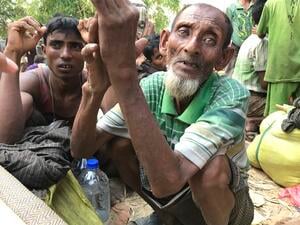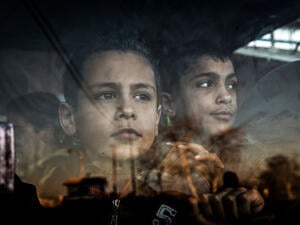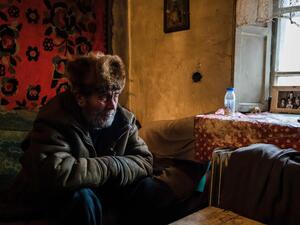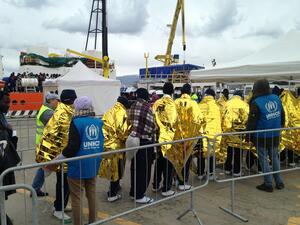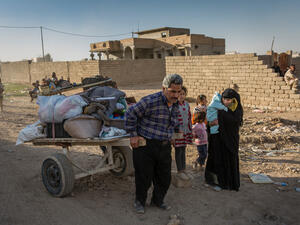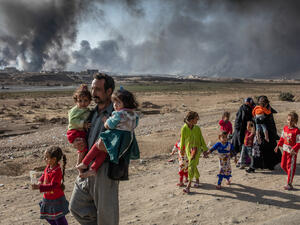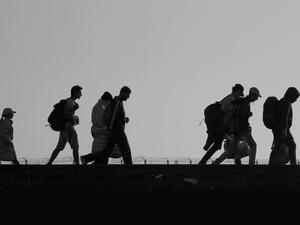Poor countries host most refugees; rich countries should share burden, says new UNHCR statistics book
Poor countries host most refugees; rich countries should share burden, says new UNHCR statistics book

In 2001, Afghan refugees made up one-third of the world's refugee population, says UNHCR's new Statistical Yearbook.
GENEVA, November 8 (UNHCR) - There are fewer refugees in the world today than there were 10 years ago, but most of them are concentrated in developing countries, says a new UNHCR statistical yearbook that suggests the industrialised world should share the responsibility.
On Friday, the UN refugee agency released its first annual Statistical Yearbook, offering a 10-year overview of trends in displacement, protection and solutions among refugees, asylum seekers and other persons of concern based on statistics from governments, UNHCR registration systems and implementing partners.
"I hope the yearbook will prove to be a valuable tool for those researching the evolution of global forced displacement, the nexus between asylum and migration, and the sharing of burdens and responsibilities," writes High Commissioner Ruud Lubbers in a foreword to the yearbook. "Above all, I hope it will provide a more solid underpinning for the current refugee and asylum debate, and that it will contribute to informed policy and decision-making."
One of the yearbook's main findings is that while the number of persons of concern to UNHCR has dropped by 24 percent in the last decade - down to 19.8 million in 2001 - the majority of them are concentrated in developing countries. Such countries have produced 86 percent of the world's refugees in last 10 years, but also provided asylum to 72 percent of them.
This puts into context rich countries' rising concerns that more asylum seekers are arriving at their borders. "The fact that seven out of 10 refugees are hosted by low-income countries underscores the responsibility of industrialised states to share in international refugee protection," states the yearbook in a compilation of its main findings.
Specifically, Asia has hosted an increasing number of refugees since the mid-1990s, while Africa has reported declining numbers. Afghans make up one-third of the world's refugee population, notes the yearbook, which covers the period up to December 31, 2001, and does not reflect more recent developments in Afghanistan. More than 1.7 million Afghan refugees have returned home so far in 2002.
The yearbook also reports that while the number of new refugee outflows has decreased by 38 percent since the early 1990s, "the plight of internally displaced people may well have become worse". However, it adds, trends in internal displacement are hard to assess due to a lack of reliable information.
A demographic breakdown of persons of concern to UNHCR reveals that almost half (48.1 percent) are women and 44.5 percent are children under 18 - useful information when designing refugee programmes on the basis of gender and age profiles.
In addition, the statistics reveal that the number of people applying for asylum in industrialised countries rose by 8 percent in 2001, but recognition rates remained virtually unchanged from 2000. Total recognition rates in Europe were lower than in North America, but exceeded those of Australia and New Zealand.
Interestingly, more people applied for asylum in Central Europe (33-percent increase) and six non-European industrialised countries (31-percent increase). Applications dropped slightly (1 percent) in the 15 member countries of the European Union.
"The growing number of asylum seeker applications in Central Europe is an encouraging sign of new States parties to the 1951 Convention assuming their obligations towards refugees and, in doing so, contributing to international burden-sharing," notes the yearbook.
With regard to resettlement, industrialised countries resettled 8 percent fewer refugees in 2001, with main resettlement countries like Australia, Canada and the United States reporting lower resettlement arrivals.
Summing up its findings, the UNHCR Statistical Yearbook concluded, "Since 1992, global refugee figures have fallen, more refugees have been repatriated than were forced to leave their country and new refugee outflows have diminished."
However, it cautioned, "there is no room for complacency - the nature of refugee protection appears to be changing. UNHCR is increasingly having to manage stable or protracted situations rather than emergencies or durable solutions."


